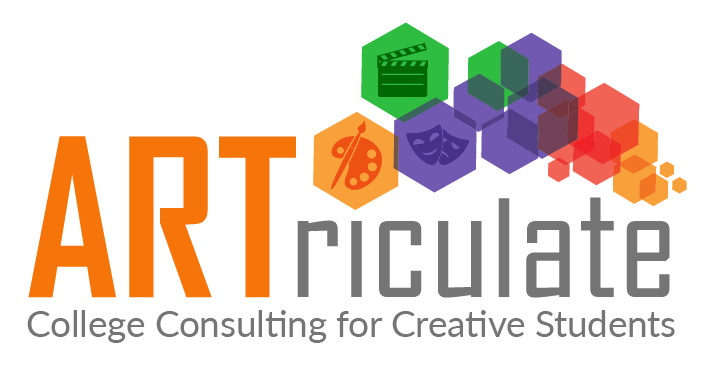College Fit… Knowing your "needs" vs. your "wants" vs. your "does it really matter"
You probably hear a lot about "best fit" with respect to building your college list. We encourage families to think about it as a constellation of characteristics that includes academics, culture, geography, career, and affordability. Here's what we mean:
Academics - Academics are probably the main reason you apply to a college. Colleges include large research universities with 10,000's of students, small liberal arts colleges with about 2,000 students, and conservatory based programs which focus specifically on artistic programs. Some schools offer a BFA while others offer a BA or BS, most likely a BFA is offered by a conservatory/art school, while a BA/BS are offered by a liberal arts college/university (learn more about the differences between degrees here and the features of liberals arts colleges here). There is considerable variety in majors, minors, concentrations, curricula, access to professors, requirements, study abroad programs, internships, research opportunities, and all things that relate to the education which you will receive. It is up to you to determine what academic aspects are important to you.
Culture - Finding the group of students and professors you want to learn from, and live with, for four years is as important as the academic programs offered by a school. These relationships will hopefully be the start of lifelong friendships and career connections. Find schools where you align with the student body and the mission of the school. If you are committed to social justice causes a school with strong community service connections might be perfect. If language, culture and history are important then a school with a committed study abroad program will probably be great (and several art schools allow, and even require, students to study abroad as part of their curriculum). Read the online school newspapers, look at the clubs offered, the non-academic departments available, they are all an invaluable resource for learning about campus culture and priorities. Pay attention to the "vibe" at the school when you visit, is this the community you'll fit into?
Geography and Campus - What physical environment is most comfortable for you? Do you want a closed campus, or urban "campus without walls"? If you enjoy hiking and skiing you may prefer school in the mountains, if you love to look at art or go to shows you might prefer a school in a city with many galleries, museums, and theaters. Where do you want to spend four years, keeping in mind that very often students stay near where they go to school after they graduate, and that many schools draw a majority of students from the region in which they are located. Also, when considering geography, how far from home do you want to be? Consider the time and expense of coming home when you decide this. The physicality of a college really does matter.
Career Guidance - While college will be your education and home for four years, it is also critical that upon graduation the school has the career opportunities that are right for you. Research their internship opportunities, corporate recruiting, graduate school acceptances, connections to industry that you think might be important, alumni pages on LinkedIn and the like. Some schools also have integrated internship and co-op programs which often lead to jobs after graduation, learn about co-op programs here. You can research post graduation outcomes (within six months of graduation) for many schools by searching for a college's First Destination Report.
Affordability - College is a major investment of both your time and your money. For many families it is your biggest investment after your house. If securing merit aid is a requirement make sure that schools on your list provide merit aid, not all do, and if they do, know the criteria for receiving it. In many cases it is based on GPA and test scores (this may impact your decision to take standardized tests), in which case your best chances for receiving merit aid are when you are in the top 25% of a school's GPA and SAT/ACT range (for rough example, if you have a 3.9 GPA and a 32 ACT your best chances for merit are at schools where the average GPA is a 3.5 and ACT is a 29). For creative students merit aid is often portfolio/audition based, read how to prepare a competitive portfolio here. For some schools merit aid is available if you apply by a certain date and have certain test scores (so make sure you know this before deciding not to take standardized tests), so knowing that information is critical as well. The financial aid pages should be able to give you accurate information, if you still have questions call the financial aid office. Merit aid information is also shown in Section H (specifically H2A presents information on non need-based aid) of the Common Data Set, read this blog if you want to learn more about this data rich document.
A quick word about rankings, an important part of the rankings game (and it is a game) that contributes to a college being highly ranked is obtaining a large volume of applications and rejecting as many students as possible, i.e. “acceptance rate.” Rankings are in some part about rejection. They do not necessarily speak to the quality of teaching, faculty mentorship, or campus environment and whether that environment is one where your student would thrive.
Remember, a “best fit” for your friend or even your sibling is not necessarily a “best fit” for you. Do your research and we can guarantee that among the almost 3,000 colleges in the U.S. you will find a whole host of schools which will make your four years in college a success.
If need help with your college list or applications, make an appointment to talk to us today!
